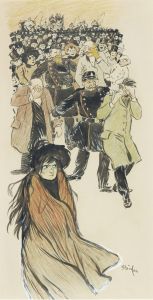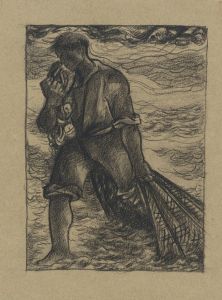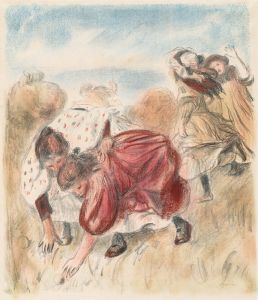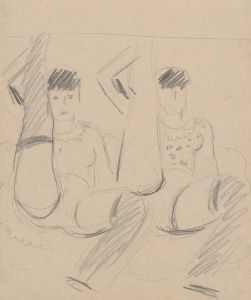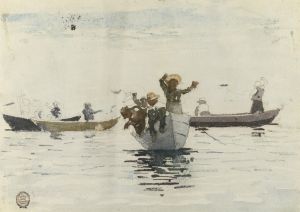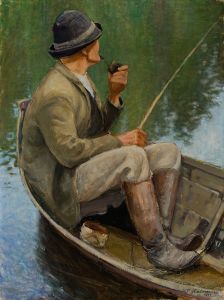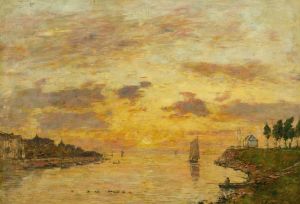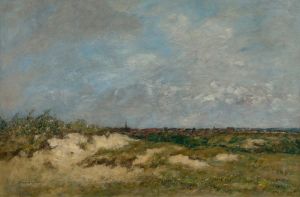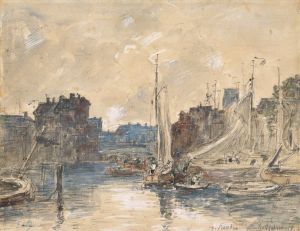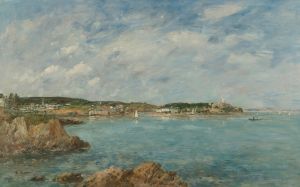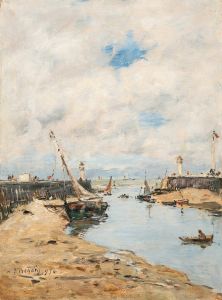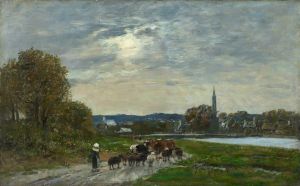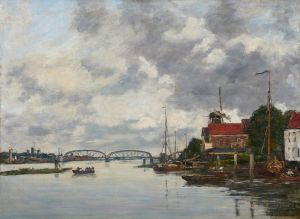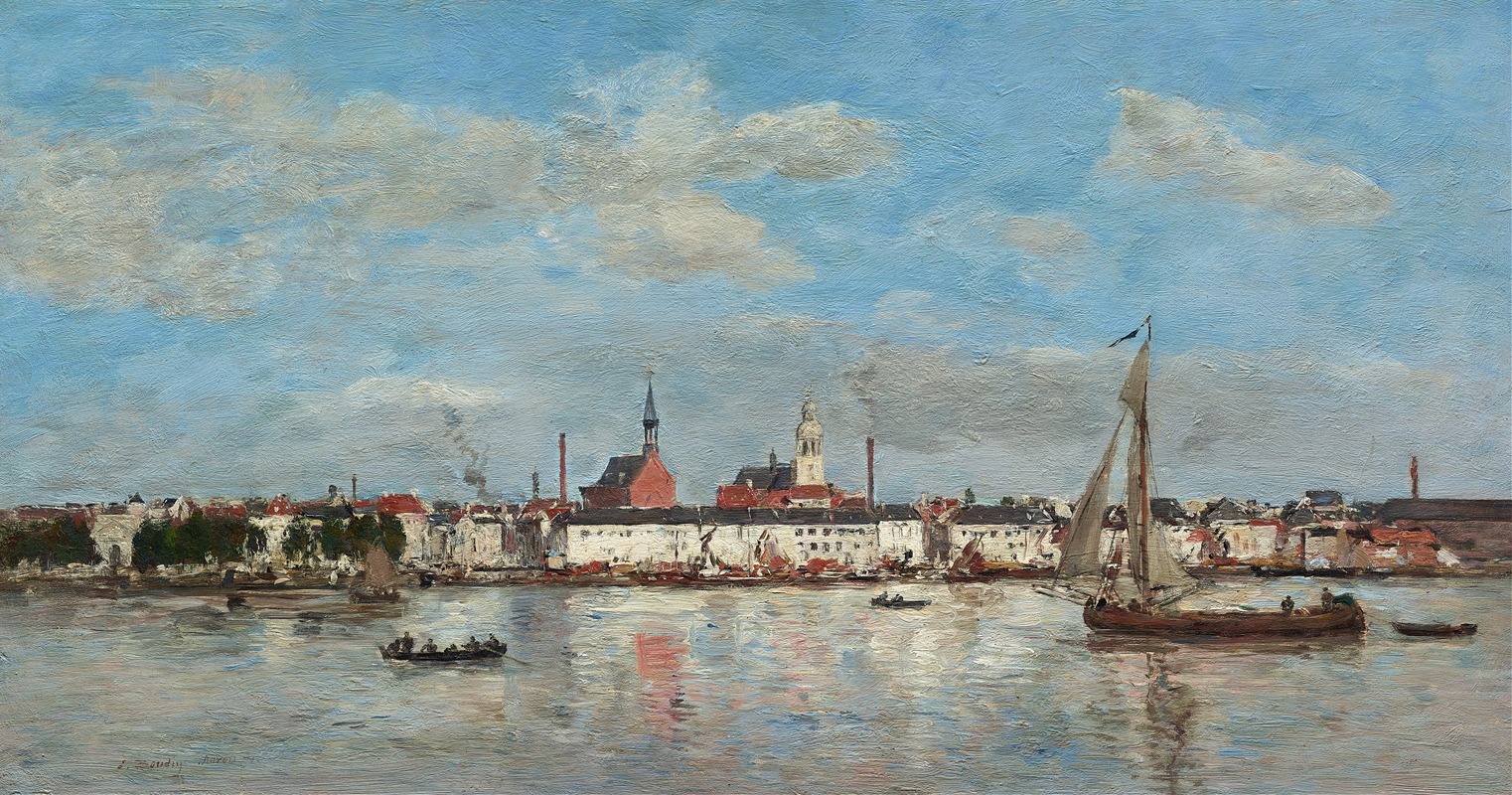
The Quay at Antwerp
A hand-painted replica of Eugène Boudin’s masterpiece The Quay at Antwerp, meticulously crafted by professional artists to capture the true essence of the original. Each piece is created with museum-quality canvas and rare mineral pigments, carefully painted by experienced artists with delicate brushstrokes and rich, layered colors to perfectly recreate the texture of the original artwork. Unlike machine-printed reproductions, this hand-painted version brings the painting to life, infused with the artist’s emotions and skill in every stroke. Whether for personal collection or home decoration, it instantly elevates the artistic atmosphere of any space.
"The Quay at Antwerp" is a painting by the French artist Eugène Boudin, who is widely recognized for his contributions to the development of landscape painting and his influence on the Impressionist movement. Boudin was born on July 12, 1824, in Honfleur, France, and he developed a keen interest in capturing the effects of light and atmosphere in his works. He is particularly known for his seascapes and beach scenes, often depicting the coastal regions of France.
"The Quay at Antwerp" is one of Boudin's many works that showcase his ability to portray the bustling activity and atmospheric conditions of port cities. Antwerp, a major port city in Belgium, provided a rich subject for Boudin's interest in maritime life and the interplay of light and water. The painting captures the essence of the quay, with its busy harbor scene, ships, and the dynamic environment of the port.
Boudin's technique in "The Quay at Antwerp" reflects his mastery of plein air painting, a method of painting outdoors to directly capture the effects of light and atmosphere. This approach was revolutionary at the time and laid the groundwork for the Impressionist movement. Boudin's brushwork in this painting is characterized by loose, fluid strokes that convey the movement of water and the bustling activity of the quay. His use of color is also notable, with a palette that captures the natural light and the varying hues of the sky, water, and ships.
The painting is an excellent example of Boudin's ability to blend realism with an impressionistic touch, creating a vivid and lively depiction of the scene. His attention to detail in the rendering of the ships and the quay, combined with his broader, more impressionistic treatment of the sky and water, demonstrates his skill in balancing different elements within a composition.
Eugène Boudin's work, including "The Quay at Antwerp," had a significant impact on the artists of his time, particularly the Impressionists. Claude Monet, one of the leading figures of the Impressionist movement, was greatly influenced by Boudin and considered him a mentor. Boudin's emphasis on capturing the transient effects of light and atmosphere can be seen in the works of many Impressionist painters who followed him.
"The Quay at Antwerp" is housed in the Musée d'Orsay in Paris, which holds an extensive collection of 19th-century art, including many works by Boudin. The museum's collection provides a comprehensive overview of Boudin's career and his contributions to the development of modern landscape painting.
In summary, "The Quay at Antwerp" by Eugène Boudin is a significant work that exemplifies the artist's skill in capturing the lively atmosphere of port cities and his pioneering approach to plein air painting. Boudin's influence on the Impressionist movement and his ability to convey the effects of light and atmosphere make this painting an important piece in the history of art.





